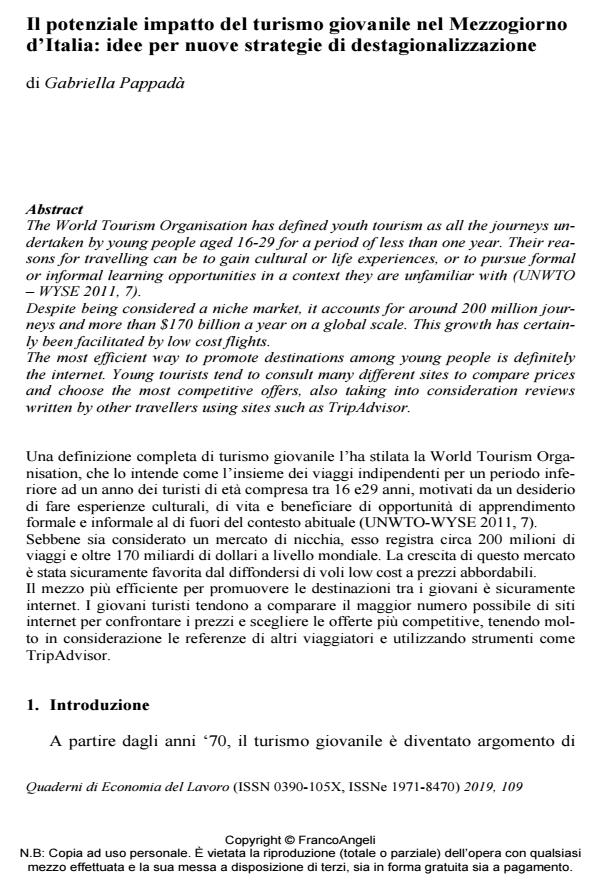Il potenziale impatto del turismo giovanile nel Mezzogiorno d’Italia: idee per nuove strategie di destagionalizzazione
Journal title QUADERNI DI ECONOMIA DEL LAVORO
Author/s Gabriella Pappadà
Publishing Year 2020 Issue 2019/109
Language Italian Pages 17 P. 41-57 File size 196 KB
DOI 10.3280/QUA2019-109004
DOI is like a bar code for intellectual property: to have more infomation
click here
Below, you can see the article first page
If you want to buy this article in PDF format, you can do it, following the instructions to buy download credits

FrancoAngeli is member of Publishers International Linking Association, Inc (PILA), a not-for-profit association which run the CrossRef service enabling links to and from online scholarly content.
The World Tourism Organisation has defined youth tourism as all the journeys undertaken by young people aged 16-29 for a period of less than one year. Their reasons for travelling can be to gain cultural or life experiences, or to pursue formal or informal learning opportunities in a context they are unfamiliar with (UNWTO - WYSE 2011, 7). Despite being considered a niche market, it accounts for around 200 million journeys and more than $170 billion a year on a global scale. This growth has certainly been facilitated by low cost flights. The most efficient way to promote destinations among young people is definitely the internet. Young tourists tend to consult many different sites to compare prices and choose the most competitive offers, also taking into consideration reviews written by other travellers using sites such as TripAdvisor.
Gabriella Pappadà, Il potenziale impatto del turismo giovanile nel Mezzogiorno d’Italia: idee per nuove strategie di destagionalizzazione in "QUADERNI DI ECONOMIA DEL LAVORO" 109/2019, pp 41-57, DOI: 10.3280/QUA2019-109004